How Can We Help?
Quick start
Creating a scenario: Basic process
When creating and using a scenario in DataMesh Studio, please follow the steps below:
1. Define the scenario content
This includes the scenes, steps, elements, data, and interactions that the scenario needs to express.
2. Upload resources
Upload any 3D models and other resources that you will need for your scenario, such as audio, video, pictures, and PDF files. You can upload both 2D and 3D resources through our FactVerse platform, and if you need to edit a 3D model prior to uploading, our DataMesh Importer supports that.
3. Create a new scenario
After logging in, create a new scenario where you can utilize the resources and tools in DataMesh Studio to create and edit 3D content.
4. Populate your scenario
i. Edit scenes: Organize the scenario content by using multiple scenes, scene catalog, and scene jumping.
ii. Add elements: Add various elements from My Resources and Libraries, including models, attachment elements, and tool elements.
iii. Edit element attributes: Select an element and modify its position, rotation, and scale.
iv. Add action and interaction: Add action and interaction effects to the elements.
v. Publish the scenario: DataMesh Studio enables easy publishing of the content to our servers.
5. Preview scenario
You can quickly preview a scenario by using the URL or QR code. Simply open the URL link in a browser or use DataMesh One to scan the QR code for an instant preview.
Note: You must have access permissions to the directory where the scenario is located.
6. Remote coordination
With DataMesh One, you can engage in 3D MR coordinated operations remotely with other users.
Exercise: Create a digital twin scenario to showcase a coffee machine
This example demonstrates how to quickly create a simple scenario with a coffee machine model and four scenes. We will apply tags, disappearance, scatter, and remove scatter actions to the coffee maker model, as well as incorporate some basic camera movements.
Prerequisites
The coffee machine model has been uploaded to the FactVerse platform.
Steps
1. Log in to DataMesh Studio.
2. Click the Create button on the homepage to create a new scenario.
3. Find the 3D coffee machine model in the My Resources section on the left, then drag and drop it into the workspace. This adds the model into the scene.
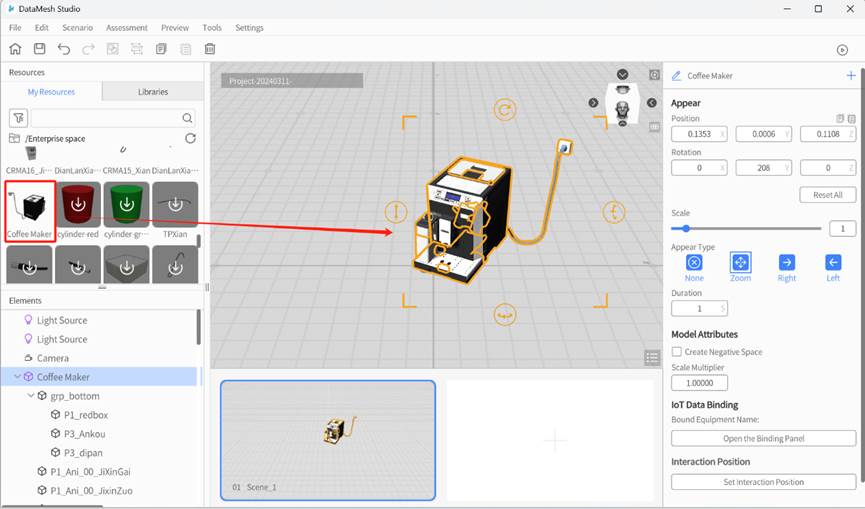
4. Click on the coffee machine model in the scene and adjust its position, rotation angle and scale by using drag-and-drop and rotation operations.
5. Select the coffee machine model and set its Duration to 2 seconds in the Attributes pane. This sets the time that the 3D model takes to appear, and you can also set the duration of functions and transitions as well.
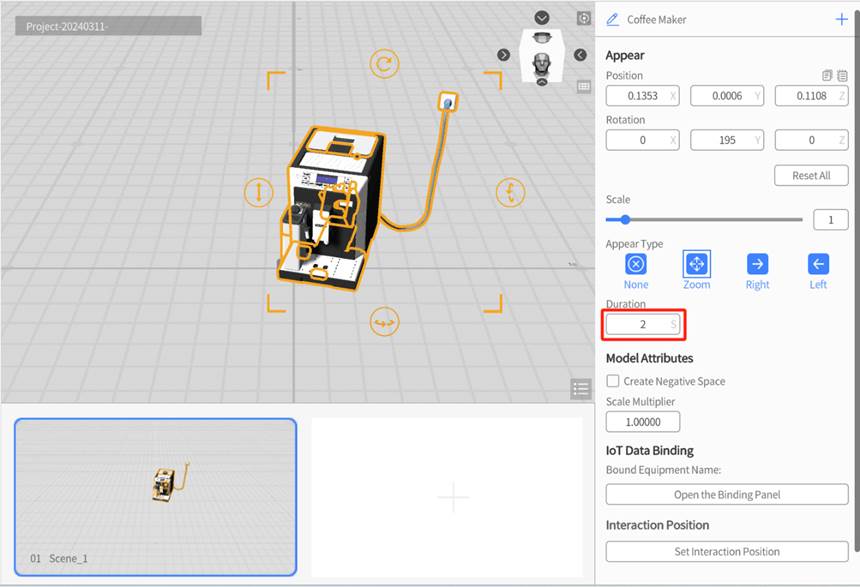
6. In the Resources pane, click the Libraries tab. From the Libraries section, select the Tag. Drag the tag to the workspace and drop it above the coffee machine model. You can customize the tag by adjusting its size, moving the anchor, and modifying the text size and content.

7. Click the + button in the timeline to create a new scene named “Scene_2”.
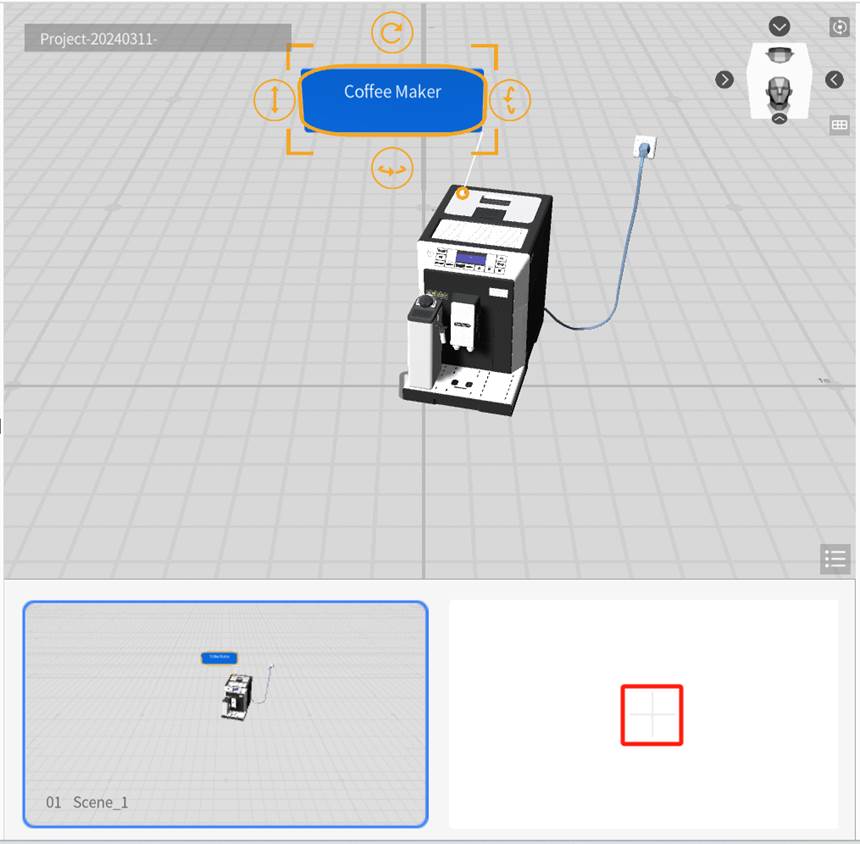
8. Add a “disappear” action to the tag in “Scene_2”. This ensures that the tag disappears during scene 2. For more details, refer to Disappear.

9. Select the coffee machine model in the workspace and click Disassemble in the action menu to separate all components of the coffee maker to easily see its inner workings. For more details, please refer to Disassemble.

Set the Disassemble Type as Axial, which organizes all sub-components into a line.
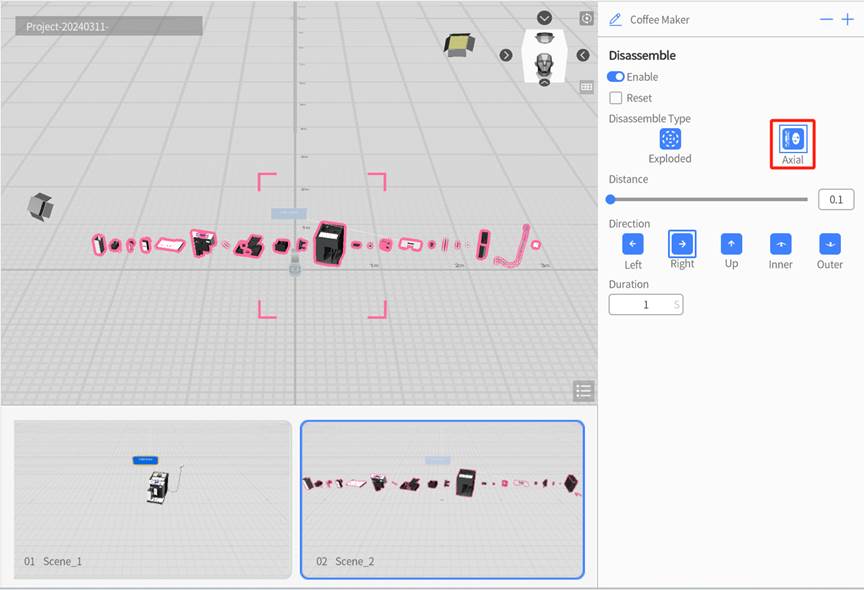
10. Click the + button again to create a third scene. Select the coffee machine model in “Scene_3” and click Disassemble.
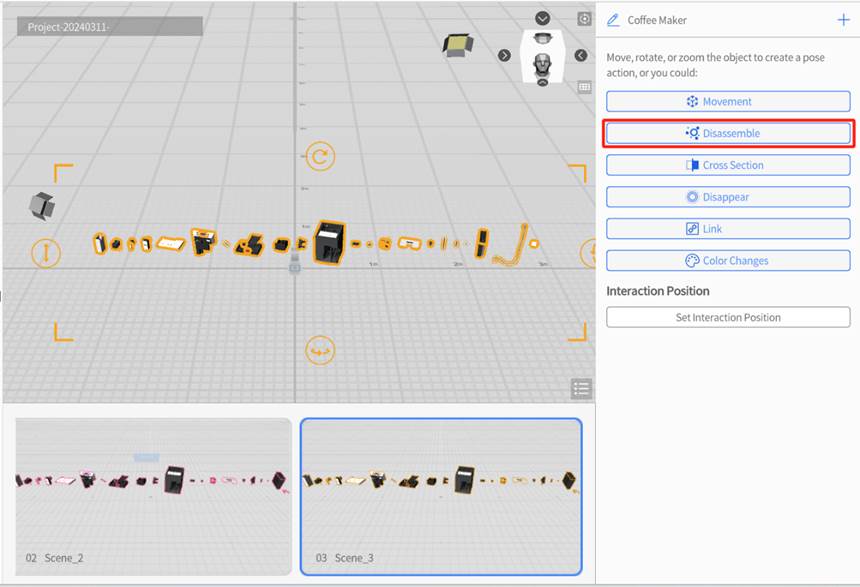
11. Select the Reset checkbox in the disassemble action to reassemble the coffee machine model back to its initial status.
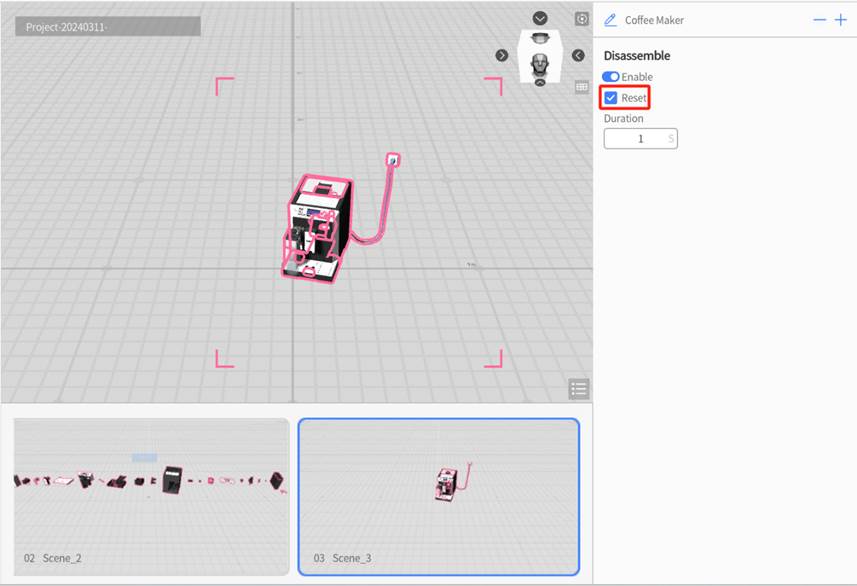
12. Add a cross section action to the coffee machine model.
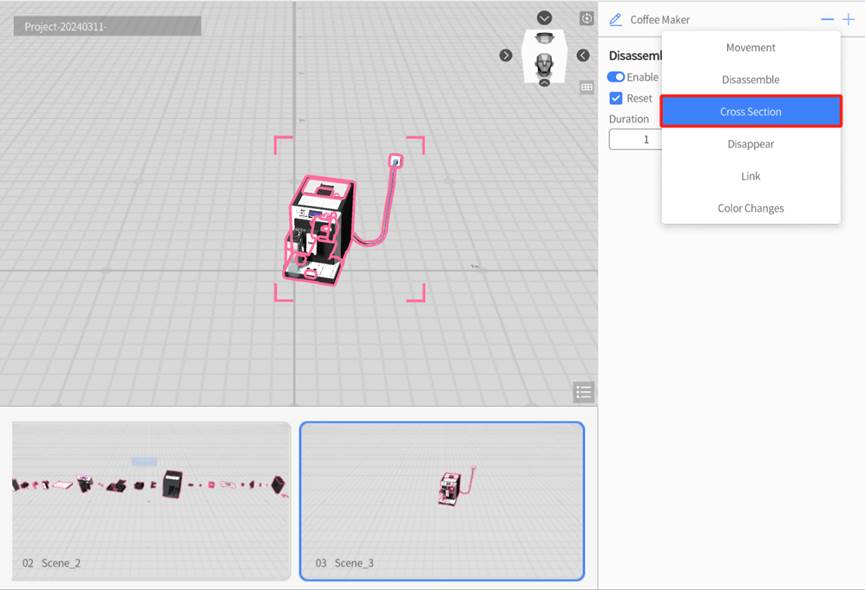
To configure the cross section action of the coffee machine model, you can move the removal cube to adjust the section’s position.
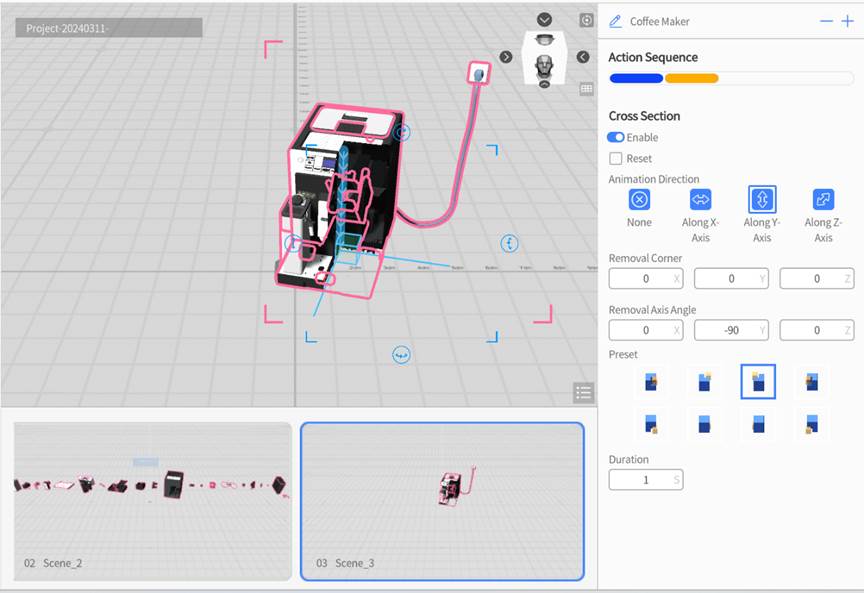
13. Create “Scene_4” and select the coffee machine model. In “Scene_4”, we will implement the action of removing part of the coffee machine model to display a cross section. Click on Cross Section to add a cross section action to the coffee machine model.
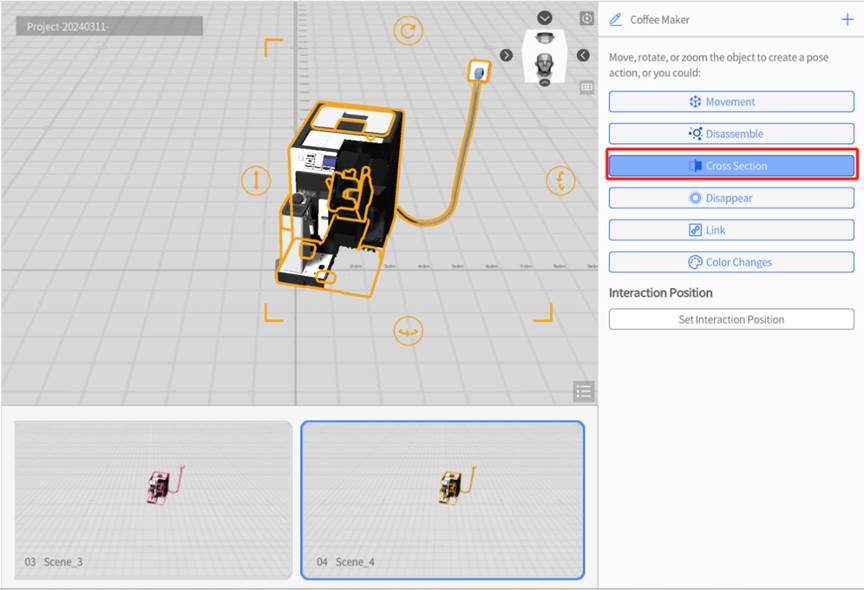
14. In the attributes pane, tick the Reset checkbox. After the completing section, the coffee model will resume to original status. Adjust the position of the removal corner and removal axis angle of the removal cube.
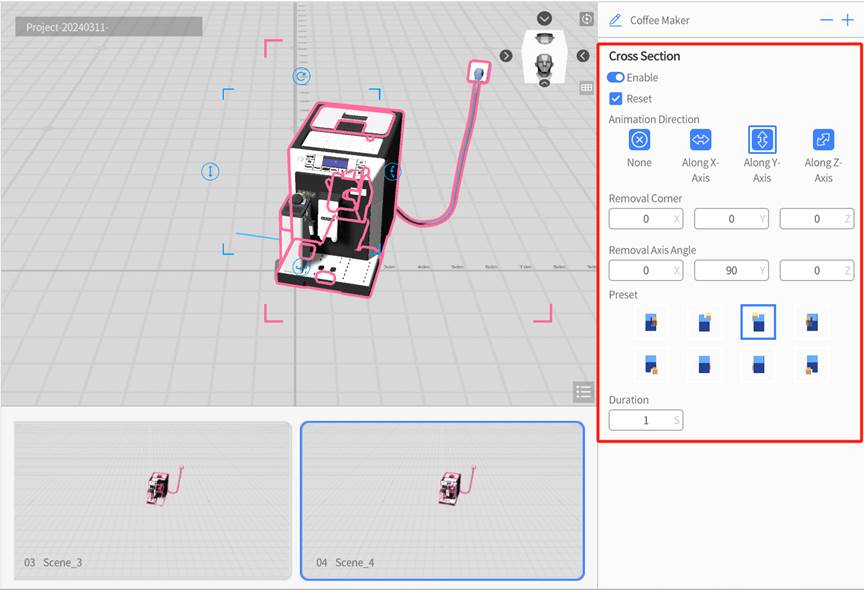
15. Adjust your view of the scene so that the coffee machine is in the center of the workspace, then select the camera in the Elements pane. In the attributes pane, click the blue button Set Camera POV. For more information on camera movements, refer to the Camera section.
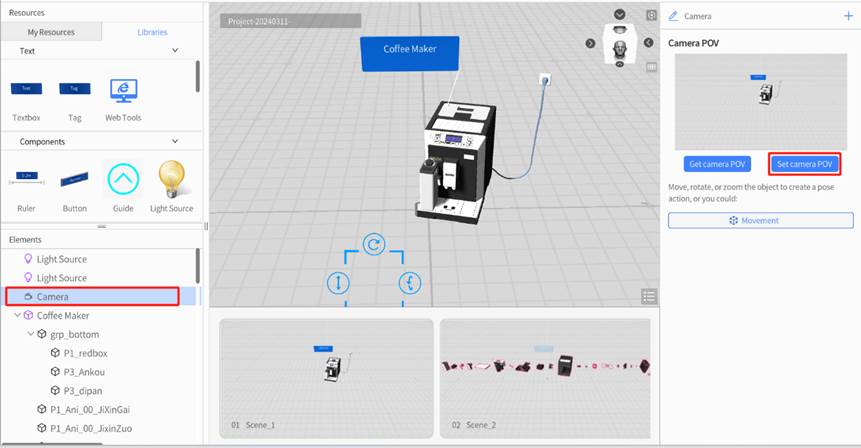
16. In the timeline, select the first scene and click ![]() in the Menu to preview the scenario.
in the Menu to preview the scenario.
17. Click ![]() to save the scenario.
to save the scenario.